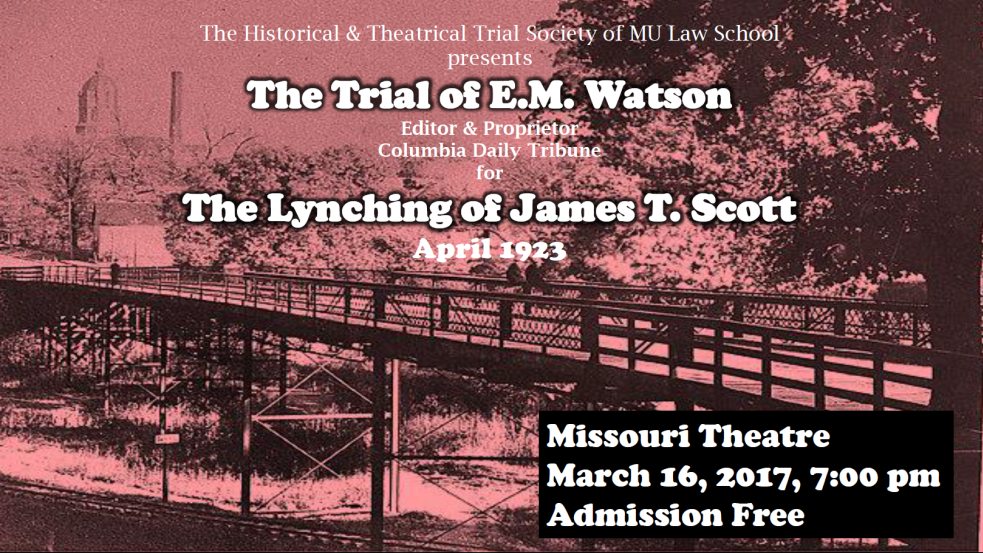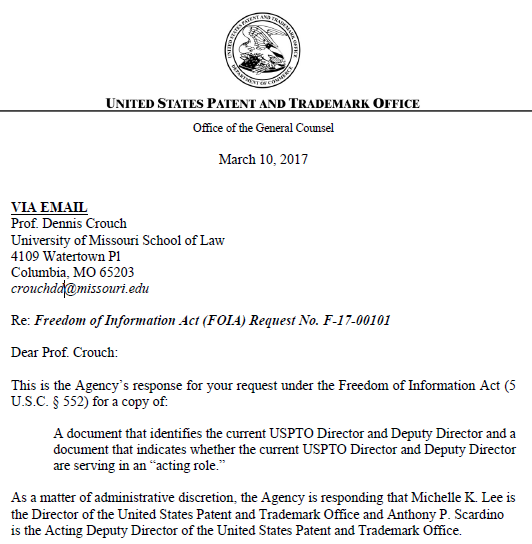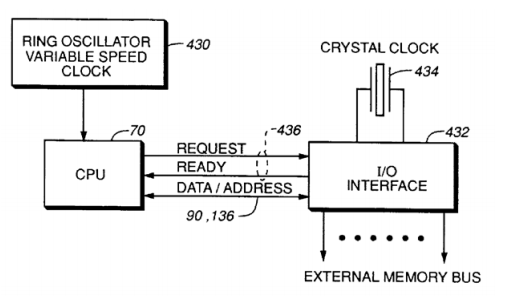Guest Post by Sean M. O’Connor, Boeing International Professor, University of Washington School of Law
As most readers of this blog know, patent exhaustion is usually traced to Chief Justice Taney’s statement in the 1853 case of Bloomer v. McQuewan: “when the machine passes to the hands of the purchaser, it is no longer within the limits of the [patent]. It passes outside of it.”[1] Taken on its own, the quote seems straightforward to establish the modern doctrine, perhaps relying on some underlying common law rule regarding free alienability of goods. But those who read the full opinion carefully can feel less certain of this—something doesn’t seem right. As Judge Taranto correctly noted in the Federal Circuit’s Lexmark International, Inc. v. Impression Products, Inc. opinion, currently on appeal at the Supreme Court, the transactions at issue appear to be licenses or assignments and not sales of patented machines.[2] Recent scholarship has shed further light on the roots of exhaustion. John Duffy and Richard Hynes advance an account of exhaustion as judicial efforts to cabin overlapping fields of law.[3] Christopher Beauchamp revealed the details behind the first patent litigation explosion, drawing similarities to modern concerns.[4] And Adam Mossoff identified Taney’s quote as dicta, while insightfully placing it in the context of Taney’s Jacksonian Democrat politics and judicial activism.[5]
In a paper recently posted to SSRN,[6] I argue that, while this new scholarship is on the right track, it does not go far enough in unpacking the transactions and cases behind Taney’s quote. A careful reconstruction reveals that machine patentees were engaged in “patent farming:” franchising systems that relied on multilevel assignments and licenses down through wholesalers to local craftsmen who built and used patented machines in their businesses. This was because mass manufacturing and nationwide distribution of machines or other complex patented inventions was not feasible in the antebellum period.
These systems were disrupted under the patent term extensions authorized in the 1836 Patent Act, as patentees treated the extensions as new terms that allowed them to demand new deals from existing assignees/licensees. The latter believed that a proviso in the Act preserved their grants into the new term. Things came to a head in 1846’s Wilson v. Rousseau, a complicated set of consolidates cases that essentially had two holdings: 1) the extensions wiped away any existing assignments and licenses, unequivocally stating that the local franchisees could not continue using the machines they had built themselves in the first term; but 2) the proviso created a compulsory license authorizing the existing grantees to continue using the existing machines, but they could no longer make or sell machines even if they held those rights in the first term.[7] Crucially, defendants raised an exhaustion-type argument that the Court rejected.
In Bloomer, the Court was called on to decide whether the proviso also applied to Congressional private act extensions that were silent on existing grantee rights. Writing for the Court, Taney made an in pari materia argument that the private acts had to be “ingrafted” onto the general Patent Act, including the proviso, because otherwise they did not provide enough details on their own. While this fully resolved the matter, Taney engaged in extensive, unnecessary dicta—as he would do in Dred Scott and elsewhere—to explain or justify Congress’ policy decision to include the proviso in the Act. It was here that he argued that, because the local licensee franchisees received no direct benefit from the patent (they could neither sell machines, grant sublicenses, or enforce the patent), such grantees’ machines should be seen as “outside the monopoly,” with continued use rights. But the compelling spatial metaphor proved more than Taney claimed. If the machine were truly outside the patent then the franchisee should be able to resell it, which the Court clearly prohibited by expressly extending Wilson’s proviso interpretation to private act extensions. Taney’s opinion seemed driven by his Jacksonian Democrat political views to limit the reach of federal power—in the form of patents—and to protect local craftsmen from distant patent sharks and financiers.
Contrary to modern cursory histories of exhaustion, Bloomer in fact made no changes to patent law (other than applying the proviso to private act extensions). Subsequent treatises and cases cited Bloomer only for this principle. But one of Taney’s fellow Jacksonians on the Court, Justice Clifford, picked up the dicta and began oddly restating it in cases as if it were a statement of law, even though it was usually inapposite to the facts at hand and itself dicta outside the case’s holding. Incrementally, Clifford seemed to convince other Justices (and lower courts) that there was some kernel of binding law here. Slowly but steadily, Taney’s dicta edged into holdings.
Notwithstanding, it took twenty years for the dicta to be used in a Supreme Court holding for use-rights only in an actuals sale of goods,[8] and another twenty to find a right of resale as part of what was originally called “emancipation.”[9] Patent exhaustion did not arise from common law principles of free alienability of chattels,[10] nor was it solely a statutory interpretation issue, nor an intentional effort to protect consumer rights or limit anticompetitive behavior generally. Instead, the unifying principle was that the courts were trying to protect the parties’ reasonable expectations and basis of the bargain when unexpected developments, such as unforeseen legislation creating a new kind of patent term extension, appeared. To this end, with few exceptions (such as the antitrust zeal of the early twentieth century), the Supreme Court was clear that emancipation/exhaustion was a default implied license for use (and later, resale) by purchasers of patented goods, but that could be contracted around by express mutually-assented conditions. At the same time, the courts were vigilant against “gotcha” tactics of some patentees and purchasers alike, and many of the cases are best understood as courts policing these abuses.
In the end, courts of the nineteenth century were grappling with an explosion of innovative patent commercialization models similar to today’s experimentation with IP-based transactions. But the response then was not to straightjacket these new models into a single mandatory transaction type. And the Supreme Court should resist that temptation in deciding Lexmark now. To decide that exhaustion is a mandatory rule precluding the use of expressly conditional sales that are the mutually assented basis of the parties’ bargain would be historically and doctrinally inaccurate. Equally important, it would cut off many economically and socially useful IP-goods transactions, especially in the modern globalized value/supply chain production of technology-based goods such as computers, smartphones, and televisions.[11]
= = = = =
[1] Bloomer v. McQuewan, 55 U.S (14 How.) 539, 549 (1853).
[2] See, e.g., Lexmark International, Inc. v. Impression Products, Inc., 2014-1617, 2014-1619 Slip Op. (Fed. Cir. 2016) (describing the transactions at the heart of Bloomer as patent licenses and not sales of goods).
[3] John Duffy and Richard Hynes, Statutory Domain and the Commercial Law of Intellectual Property, 102 Va. L. Rev. 1 (2016).
[4] Christopher Beauchamp, The First Patent Litigation Explosion, 125 Yale L.J. 848 (2015).
[5] Adam Mossoff, Commercializing Property Rights in Inventions: Lessons for Modern Patent Theory from Classic Patent Doctrine, in Competition Policy and Patent Law Under Uncertainty: Regulating Innovation (eds. Geoffrey Manne and Joshua Wright, Cambridge Univ. Press 2011); Adam Mossoff, Exclusion and Exclusive Use in Patent Law, 22 Harvard. J.L. Tech. 321 (2009); Adam Mossoff, A Simple Conveyance Rule for Complex Innovation 118 Tulsa L. Rev. 101, 107-10 (2009).
[6] Sean M. O’Connor, Origins of Patent Exhaustion in Jacksonian Politics, Patent Farming, and the Basis of the Bargain available at https://papers.ssrn.com/sol3/papers.cfm?abstract_id=2920738.
[7] 45 U.S. 646 (1846).
[8] Adams v. Burke, 84 U.S. 453 (1873).
[9] Keeler v. Standard Folding Bed Co., 157 U.S. 659 (1895).
[10] In the paper, I expand on Judge Taranto’s and Professors Duffy and Hynes’ arguments that Justice Breyer’s citation to Lord Coke’s 1628 Institutes in Kirtsaeng v. John Wiley & Sons, Inc., 133 S.Ct. 1351 (2013), is not dispositive to show a common law basis for exhaustion.
[11] See Brief of 44 Law, Business and Economics Professors, Impression Products, Inc. v. Lexmark International, Inc., available at https://papers.ssrn.com/sol3/papers2.cfm?abstract_id=2923826; Sean M. O’Connor, IP Transactions as Facilitators of the Globalized Innovation Economy 212-27 in Rochelle Dreyfuss et al., Working Within the Boundaries of Intellectual Property: Innovation Policy for the Knowledge Society (Oxford Univ. Press 2010).





 I am looking forward to our event at the University of Missouri School of Law on Friday, March 10, 2017: Implementing and Interpreting the Defend Trade Secrets Act. Sponsored by our Center for Intellectual Property and Entrepreneurship (CIPE) and the Business, Entrepreneurshisp & Tax Law Review (BETR)
I am looking forward to our event at the University of Missouri School of Law on Friday, March 10, 2017: Implementing and Interpreting the Defend Trade Secrets Act. Sponsored by our Center for Intellectual Property and Entrepreneurship (CIPE) and the Business, Entrepreneurshisp & Tax Law Review (BETR)

